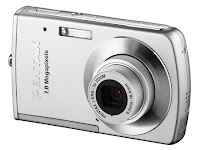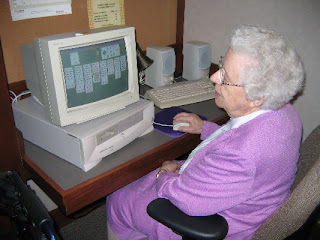
1. "A new technology is rarely superior to an old one in every feature." Breifly discuss this statement in relation to digital camera technology. What would you consider to be some of the pluses and minuses digital camera techology holds in relation to more tradtional film based cameras?
Although digital camera technology is a faster, digital way of taking photographs, it can be said it is far from superior than traditional photography. My sister is a photography student at Massey University and she generally chooses to use a traditional SLR camera or even her Hasselblad from the 1970s or so, over a digital or digital SLR camera so that says something of quailty.
It can be considered similar to the difference between an automatic car and a manual one, you get better performance with the manual. A plus to digital photography is it's instant, within seconds you get to see the image you captured, and within minutes you can share it with the world. With traditional cameras it takes time to develop the shots and you need a 'dark room' and specific equipment. Digital photographs can be uploaded on internet sites, however which can been seen as both a plus and minus for ethic reasons.
2. List some of the ways digital images can be stored, transferred and manipulated using other communications technology:
When you first take an image/photograph using a digital camera it can be instantly stored on the camera itself and on a memory stick. You can then transfer this image onto your computer where you can save to your computers hard-drive, print it out, manipulate vertually everything about it on programmes such as 'photoshop' and most importantly upload it to the internet via email or posting on a site. This in turn means it can be manipulated further by other people. You can also scrap-book the photograph you printed or put it in an album.
3. Given the prevalence of image capturing devices, and thinking about the issues discussed in tutorial one, consider what sort of ethical isues may arise with their use:
As mentioned above, a person with a digital camera can take a picture of anyone, anywhere and then upload it onto the internet for everyone to see. The picture can be manipulated to alter it negatively and make even an innocent photograph be turned negative, by either the photographer, or anyone who manages to download it from the internet therefore the privacy of the person is violated.
4. Briefly discuss some of the ways that digital images could, or are, being used in occupational therapy practice (include reference and inks to any web sites, or blogs you might come across):
'Methods that use video or other visual data offer occupational therapy and occupational science researchers great potential for the study of occupation in all its contextual complexity. Video methods are used across disciplines in both quantitative and qualitative designs' and 'Video research has been useful in examining the effectiveness of occupational therapy. Guidetti and Soderback (2001) used video in a multiple case study design to analyze improvement in dressing and undressing skills. Tham and Tegner (1997) studied the difference in effectiveness of video and verbal feedback to individuals with unilateral neglect... Video data has also been regularly used in occupational therapy to develop, standardize, and insure the validity and reliability of research and intervention instruments.'
Retrieved March 3rd, 2010, from www.thefreelibrary.com/The+usefulness+of+video+methods+for+occupational+therapy+and+...-a0208219469
5. Provide a brief summary of the services offered by Flickr.com:
Flickr is an image and video hosting website, web services suite, and online community. In addition to being a popular website for users to share and embed personal photographs, the service is widely used by bloggers to host images that they embed in blogs and social media.[2] As of October 2009, it claims to host more than 4 billion images.[3]
Retrieved March 4th, 2010 from www.wikipedia.org/wiki/Flickr
6. Name one other photo storage website which offers a service similar to Flickr.com:
www.photobucket .com7. Explain what the difference is between a digital and optical zoom:
'It's important to understand this difference, as you could end up mighty disappointed with the results if you get one rather than the other. Optical zoom is similar to what you'll find in a regular 35mm camera: When you push the button to zoom in or out, physical lens elements move inside the camera, to achieve the desired effect.
Digital zoom, on the other hand, has no moving parts. Using the "electronic brain" within the camera instead, the camera takes a look at what it's "looking at", and digitally zooms in, usually two or three times closer.
The problem with digital zoom is that you lose quality when you do this -- your images will tend to be more "pixelated" than the same image taken with an optical zoom camera. This is due to the "interpolation" the camera uses, which is a nice way of saying that it makes a guess about how the picture should look while zoomed in. Having optical AND digital zoom on a camera isn't bad, but I'd try to avoid cameras with only digital zoom, myself.'
Retrieved March 4th, 2010, from www.dcresource/faqfaq.html8. Explain what is meant by the term megapixel:
'A megapixel (that is, a million pixels) is a unit of image sensing capacity in a digital camera. (A pixel - a word invented from "picture element" - is the basic unit of programmable color on a computer display or in a computer image.) In general, the more megapixels in a camera, the better the resolution when printing an image in a given size. A digital camera with a 1.3 megapixel resolution will print a good quality 4 x 3 inch print at 300 dpi (dots per inch). If a higher quality is needed or a larger print at the same quality, a camera with a higher megapixel value will be needed.The number of images that can be stored in a given size of flash memory for the camera is determined by the size of the flash memory and the size of each image in terms of megapixels.'
Retrieved March 4th, 2010, from www. searchcio-midmarket.techtarget.com
That is the last of the questions for this post.
Once again thanks for reading!
Steph

No comments:
Post a Comment